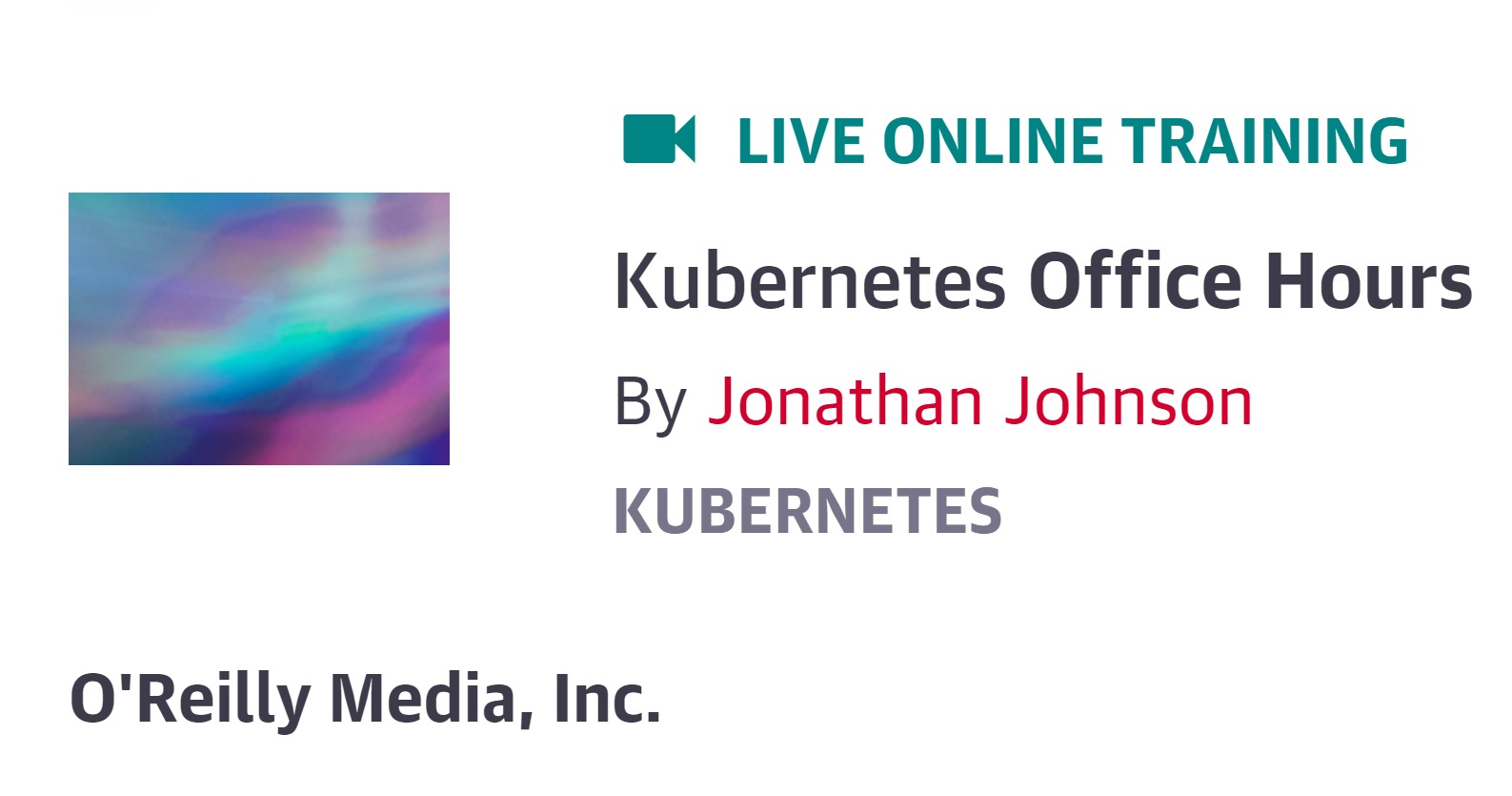
Apr
O’Reilly Live Online Training
Kubernetes Office Hours
Drop in to get your Kubernetes questions answered
How Does Kubernetes Work?
![]()

O’Reilly Live Online Training
06 Jan, 2021
16:00 UTC
O’Reilly Subscription
In this first course, you’ll explore the most important parts of Kubernetes. Jonathan will explain why it’s become the de facto orchestration platform for distributed computing, introduce Kubernetes terminology, and cover the benefits to developers (no coding required)—all while breaking down the architecture to get you to the aha moment when you understand how the engine works. You’ll then get hands-on as you learn how to run and distribute applications on this new paradigm. Once you see how it all works, you’ll dive into container patterns that developers use to run applications on Kubernetes. At the end of this course, you’ll have a thorough understanding of Kubernetes and a solid foundation for the more advanced topics that come later in this series.

This course is part of the larger 3 part series with a total of 9 weeks of Kubernetes topics. These online trainings get you started then productive with the best de facto operating system for distributed cloud computing.
Distributed application architectures are hard. The complexity in building containers and designing microservices to work together across a network can be overwhelming. To successfully manage limitations on resources, failing networks, defective software, and fluctuating traffic, you need an orchestrator.
Kubernetes is designed to handle these complexities, so you don’t have to. Essentially a distributed operating system for your data center, you give Kubernetes containers, and it makes sure that they remain available and responsive. As such, Kubernetes is quickly becoming the preferred way to serve distributed, scalable, and resilient applications.
Jonathan Johnson walks you through Kubernetes building blocks to demonstrate how the tool actually works. You may already understand containers—the tricky part is getting a whole set of containers and services to consistently work together and run reliably. In this three-part series, you’ll get comfortable designing, deploying, managing, and updating a coordinated set of applications running on Kubernetes.
